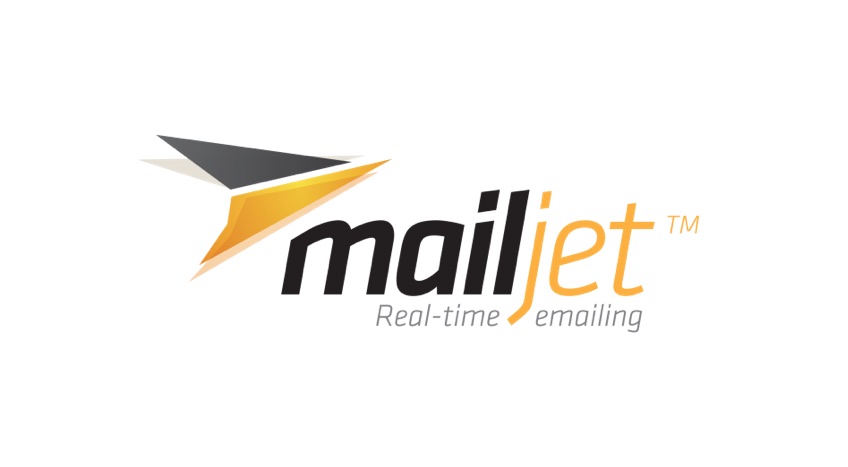Welcome to the ultimate showdown in the email marketing world – Mailjet versus Sender. In 2024, the digital marketing landscape is more competitive than ever, making the choice of the right email marketing tool crucial for your business’s success. Whether you’re a budding entrepreneur, a small business owner, or a marketing professional, understanding the nuances of these platforms can make a significant difference in your strategy. This article aims to dissect these tools, comparing their features, ease of use, and overall value in a detailed and conversational manner. Let’s dive in!
| Mailjet | Sender |
|---|---|
 |  |
| G2 Score – 4.0 out of 5 stars | G2 Score – 4.4 out of 5 stars |
| TrustRadius Score – 7.9 out of 10 | TrustRadius Score – 5.2 out of 10 |
User Interface and Experience
The user interface (UI) and overall user experience (UX) are the front doors of any email marketing tool. They set the stage for how efficiently and enjoyably you can create campaigns, analyze data, and manage your marketing efforts.
Mailjet: Simplicity and Intuitiveness
Mailjet has always been known for its clean and user-friendly interface. It’s like walking into a well-lit room where everything is easy to find and use. The platform is designed for those who value straightforwardness and efficiency. Its drag-and-drop email builder is a standout feature, allowing even the most inexperienced users to create professional-looking emails without any design or technical skills. This simplicity extends to its campaign management and analytics features, which are laid out in an intuitive manner, making it easy to track campaign performance and make data-driven decisions.
Sender: Customization and Flexibility
Sender, on the other hand, takes a slightly different approach. It offers a more customizable UI that caters to users who enjoy having control over every aspect of their email campaigns. Think of it as having a set of adjustable tools that you can tweak to fit your specific needs. This level of customization is great for users who have a clear vision of their email marketing strategy and want the flexibility to implement it precisely. However, this can be a double-edged sword, as the plethora of options and settings might overwhelm beginners or those who prefer a more straightforward approach.
Ease of Use: A Critical Factor
When comparing Mailjet and Sender in terms of UI and UX, it really boils down to your personal preference and experience level in email marketing. If simplicity, ease of use, and quick campaign setup are your top priorities, Mailjet is an excellent choice. Its intuitive design is great for beginners and those who want to get their campaigns up and running without a steep learning curve.
However, if you’re an experienced marketer who values the ability to customize every aspect of your campaigns and don’t mind spending extra time setting things up, Sender’s detailed and flexible interface might be more appealing. It’s suited for those who have specific requirements for their email marketing campaigns and are comfortable navigating a more complex system.
Automation and Workflow Management
In the realm of email marketing, the power and flexibility of automation and workflow management can be game-changers. These features determine how effectively you can engage with your audience and personalize your campaigns. Let’s delve into how Mailjet and Sender handle these crucial elements.
Mailjet: Streamlined Automation for Efficiency
Mailjet’s automation system is designed with simplicity and efficiency in mind. It’s like having a reliable co-pilot, guiding your email marketing campaigns with minimal fuss. With Mailjet, you can easily set up basic automation workflows based on subscriber actions, such as welcome emails for new sign-ups or re-engagement emails for inactive subscribers. This ease of setting up automation makes Mailjet particularly appealing for small to medium-sized businesses or those who are new to email marketing and looking for a straightforward way to enhance their campaigns.
The platform’s workflow management is intuitive, allowing you to create and manage email sequences that are both timely and relevant. It’s like having a set of smart, automated tools that take care of the routine tasks, so you can focus on more strategic aspects of your marketing.
Sender: Advanced Customization in Automation
Sender, in contrast, offers a more advanced and customizable approach to automation and workflow management. It’s akin to having a high-performance vehicle with various controls and settings you can fine-tune to your liking. With Sender, you have the flexibility to create more complex, multi-step automation workflows that can cater to detailed and specific marketing strategies.
This level of sophistication in automation is perfect for experienced marketers who want to craft highly personalized and targeted email campaigns. However, it does require a deeper understanding of marketing automation principles and a willingness to engage more deeply with the tool.
Balancing Efficiency and Sophistication
When it comes to choosing between Mailjet and Sender for automation and workflow management, it boils down to what you value more: simplicity and efficiency or advanced customization and control.
If you prefer a tool that makes automation easy and straightforward, allowing you to quickly set up and run effective campaigns, then Mailjet is the way to go. Its user-friendly approach is ideal for those who want to benefit from automated email marketing without the need to dive into complex configurations.
On the other hand, if you’re a seasoned marketer looking for a platform that offers advanced automation capabilities, allowing you to tailor every aspect of your campaigns, then Sender’s robust and flexible system will be more suited to your needs. It’s designed for those who want to take a hands-on approach to their email marketing automation.
Email Deliverability and Reliability
The core of a successful email marketing campaign lies in its deliverability. The most beautifully crafted emails are of little use if they don’t reach the intended inboxes. Let’s examine how Mailjet and Sender perform in this crucial area.
Mailjet: Ensuring Your Messages Land Successfully
Mailjet has earned a reputation for strong deliverability rates. It’s like having a trustworthy messenger who knows exactly how to navigate through various obstacles to deliver your emails effectively. The platform employs advanced algorithms and proactive monitoring to maximize the chances of your emails avoiding spam filters and reaching your audience’s inboxes.
Mailjet also focuses on maintaining a healthy sender reputation, which is vital in the world of email marketing. They provide tools for regular IP monitoring and domain management, helping you keep your sender score high. This commitment to deliverability is particularly beneficial for businesses that rely on email marketing as a key component of their strategy.
Sender: Precision and Personalization in Delivery
Sender approaches email deliverability with an emphasis on customization and data-driven strategies. Think of it as a skilled strategist who carefully plans each move to ensure your emails reach their target. Sender offers robust deliverability features that focus on optimizing your emails for better inbox placement.
One of Sender’s strengths is its ability to personalize and segment email campaigns. By tailoring content to specific audience segments, Sender increases the relevance of your emails, which plays a significant role in bypassing spam filters and achieving higher open rates. Additionally, the platform provides insights and analytics that help you understand and improve your email performance.
Navigating the Waters of Email Deliverability
When choosing between Mailjet and Sender for email deliverability, consider the level of support and sophistication you need.
Mailjet is ideal if you’re looking for a platform that combines ease of use with effective deliverability strategies. Its focus on maintaining a strong sender reputation and its user-friendly tools make it suitable for businesses that want a reliable and straightforward approach to ensure their emails are delivered successfully.
Sender, with its advanced segmentation and personalization capabilities, is well-suited for marketers who are keen on leveraging data-driven strategies to enhance email deliverability. It’s a good match for those who want more control over their email campaigns and are comfortable delving into analytics to continually improve their results.

Related: Check out our free SEO suite

Integration and Compatibility
In an increasingly interconnected digital world, the ability of your email marketing tool to integrate seamlessly with other software and services is crucial for a holistic marketing strategy. Let’s explore how Mailjet and Sender stack up in terms of integration and compatibility with other platforms.
Mailjet: Seamless Integration with Popular Platforms
Mailjet is like a friendly neighbor in the digital neighborhood, easily connecting with various platforms and tools. It offers a range of integration options with popular CRM systems, e-commerce platforms, and other marketing tools. This ease of integration means you can effortlessly sync Mailjet with your existing business tools, enhancing your marketing workflows and data management.
For instance, integrating Mailjet with your CRM allows you to directly import contacts and segment them based on their interactions with your brand. Additionally, Mailjet’s API is robust and developer-friendly, offering further possibilities for custom integrations. This makes Mailjet a great option for businesses that need a straightforward, plug-and-play email marketing tool that plays well with their current tech stack.
Sender: Versatile Integration for Advanced Needs
Sender, on the other hand, offers a more versatile approach to integration. It’s like having a multi-tool that can adapt to various digital environments. The platform provides advanced integration options that cater to businesses with specific and diverse integration needs.
While Sender’s integration capabilities are extensive, they may require a bit more technical skill to set up and manage effectively. The platform’s API is powerful, allowing for deep customization and integration with a wide range of systems and applications. This level of integration capability is particularly beneficial for larger businesses or those with a more complex digital ecosystem, where email marketing is just one piece of a larger digital strategy puzzle.
Making the Right Choice for Integration
When deciding between Mailjet and Sender for integration and compatibility, consider the complexity of your existing tech stack and the level of integration you need. If you’re looking for a tool that offers easy, straightforward integrations with widely-used platforms, Mailjet is a solid choice. Its user-friendly approach is ideal for businesses that want quick and hassle-free integration.
For those who need a more robust and customizable integration solution, capable of fitting into a complex digital ecosystem, Sender’s extensive integration capabilities are more suitable. It caters to businesses that have the technical resources to manage and leverage advanced integrations.
Customer Support and Resources
In the dynamic and often complex world of email marketing, having a solid customer support system and access to comprehensive resources can be a significant factor in choosing the right tool. Let’s delve into how Mailjet and Sender fare in terms of customer support and the resources they offer to their users.
Mailjet: User-Friendly Support and Extensive Resources
Mailjet excels in providing a user-friendly support experience. Imagine having a knowledgeable friend who’s always ready to help. This is what Mailjet’s customer support feels like. They offer various channels for support, including email, live chat, and a comprehensive knowledge base filled with helpful guides, FAQs, and tutorials.
For beginners and small businesses, this level of accessible support can be incredibly valuable. Whether you’re trying to troubleshoot an issue, understand best practices, or learn how to use a new feature, Mailjet’s resources and support team are there to guide you. This approach ensures that users of all levels can make the most out of their email marketing efforts without feeling overwhelmed.
Sender: In-Depth Support for Tech-Savvy Users
Sender approaches customer support with a focus on detailed and in-depth resources. It’s like having access to a library filled with all the information you need for your email marketing journey. They provide a wide array of documentation, including detailed guides, API docs, and a community forum for more complex or technical inquiries.
While Sender’s resources are comprehensive, they may cater more to the technically inclined users or those who prefer a DIY approach to learning and problem-solving. This depth of information is excellent for troubleshooting complex issues or for users who want to get the most out of the platform’s advanced features. However, it might be a bit overwhelming for beginners or those who prefer more direct, hands-on assistance.
Choosing the Right Support for Your Needs
When deciding between Mailjet and Sender based on customer support and resources, consider your comfort level with email marketing tools and the kind of support you anticipate needing. If you prefer a platform with accessible and straightforward support, where help is readily available, Mailjet’s approach is likely more suited to your needs. Its user-friendly support system is designed for ease of use and quick resolution of issues.
On the other hand, if you are comfortable with a more self-directed approach to learning and problem-solving and have the technical know-how to navigate in-depth resources, Sender’s extensive support content will be beneficial. It’s ideal for those who prefer to explore and solve issues independently, armed with comprehensive guides and documentation.
Pricing and Value for Money
When it comes to selecting the right email marketing tool, pricing and the value you get for your money are critical considerations. Both Mailjet and Sender offer various pricing tiers, but it’s important to understand how these relate to the features and benefits each provides. Let’s break down their pricing structures and assess the overall value.
| Mailjet | Free Plan: Includes up to 6,000 emails per month (with a daily limit of 200) and unlimited contacts. Basic features like email creation and sending are included. Essential Plan: Starting at around $15/month for 15,000 emails per month. This plan removes the daily sending limit and includes online customer support, no Mailjet logo, and sub-accounts. Premium Plan: Starting at around $25/month for 15,000 emails per month. Includes additional features like segmentation, A/B testing, marketing automation, and multi-user collaboration. Custom Enterprise Solutions: Offers custom volume of emails with advanced features and dedicated support. Pricing is custom and based on specific requirements. |
| Sender | Free Plan: Up to 2,500 subscribers and 15,000 emails per month. Includes basic features like newsletters and subscription forms. Standard Plan: Starting at $11/month for up to 5,000 subscribers and 60,000 emails. Includes advanced features like autoresponders and transactional emails. Professional Plan: Custom pricing based on higher volumes of subscribers and emails, including additional features like dedicated IP and webhooks. |
Mailjet: Flexible Pricing for Different Needs
Mailjet offers a pricing model that caters to a wide range of users, from individuals and small businesses to large enterprises. This approach is like a café with a menu that has something for everyone. There’s a free plan, which is quite generous in terms of features, making it an excellent choice for those just starting out or with minimal email marketing needs.
As your requirements grow, Mailjet’s tiered pricing plans come into play, offering additional features and greater capacity. What’s commendable about Mailjet’s pricing is its scalability – you can start with a basic plan and upgrade as your business expands. This flexibility ensures that you only pay for what you need, making it a cost-effective choice for growing businesses.
Sender: Cost-Effective Solutions for All Users
Sender, much like Mailjet, provides a scalable pricing structure, but with a slight twist. It’s designed to be highly cost-effective, offering a compelling value proposition for businesses of all sizes. Sender’s free plan is robust, allowing users to access most of the platform’s features but with limited monthly email sends.
The paid plans of Sender are competitively priced and offer increased sending limits and additional features, like advanced segmentation and automation. This pricing model is particularly attractive for businesses that are scaling up their email marketing efforts and need a tool that offers more advanced capabilities without a significant increase in cost.
Making the Best Choice for Your Budget
The choice between Mailjet and Sender in terms of pricing and value for money depends on your specific needs and how you expect them to evolve. If you’re starting out or running a small to medium-sized business, Mailjet’s flexible and scalable pricing plans can be a perfect fit, allowing you to grow your plan as your business needs grow.
For those who are looking for a cost-effective solution that offers a balance between features and price, especially if you are scaling up your operations, Sender’s pricing structure can be more appealing. It provides the necessary features for advanced email marketing at a competitive price point.
Conclusion
In the dynamic world of email marketing in 2024, choosing between Mailjet and Sender comes down to identifying what aligns best with your specific needs, expertise, and budget. Mailjet stands out for its user-friendliness and scalability. It’s an excellent choice for those starting their email marketing journey or for small to medium-sized businesses seeking an intuitive and straightforward tool. With its flexible pricing, easy-to-use interface, and efficient customer support, Mailjet ensures that even beginners can launch effective campaigns without a steep learning curve.
Sender, on the other hand, appeals to those looking for a cost-effective yet feature-rich solution. It’s particularly suited for businesses that are scaling up and need advanced functionalities without a hefty price tag. With its detailed customization options, comprehensive support resources, and competitive pricing, Sender caters well to the more tech-savvy user or a business ready to take its email marketing to a more sophisticated level.
Ultimately, both Mailjet and Sender offer robust solutions in the realm of email marketing, each with its unique strengths. Your choice will depend on whether you prioritize ease of use and simplicity (Mailjet) or advanced features and cost-effectiveness (Sender). Regardless of your choice, both platforms are equipped to propel your email marketing strategies forward in 2024.
Read Next:
- Mailjet vs Elastic Email: The Best Email Marketing Tool for 2024
- Mailjet vs Iterable: The Best Email Marketing Tool for 2024
- Mailjet vs Mailercloud: The Best Email Marketing Tool for 2024
- Mailjet vs Mad Mimi: The Best Email Marketing Tool for 2024
- Mailjet vs MoonMail: The Best Email Marketing Tool for 2024





















Comments are closed.